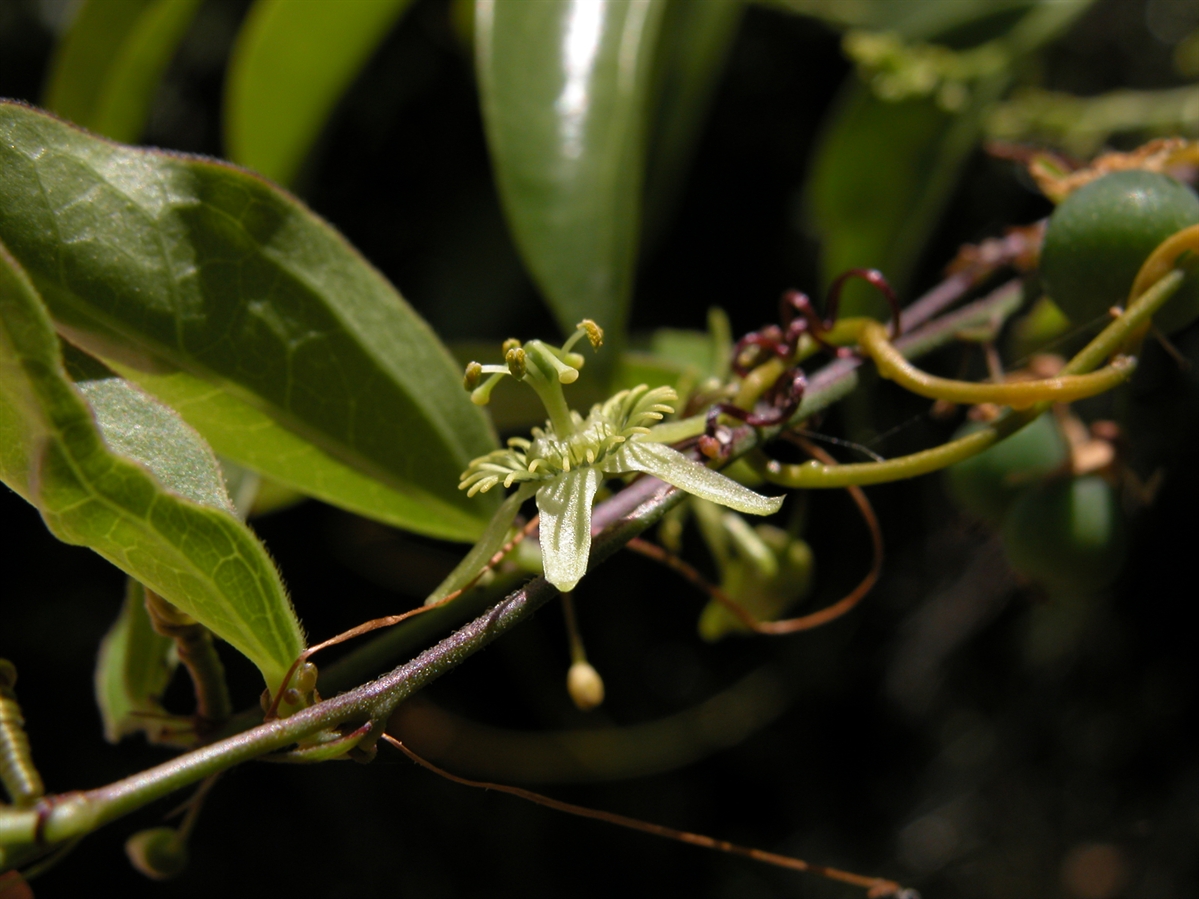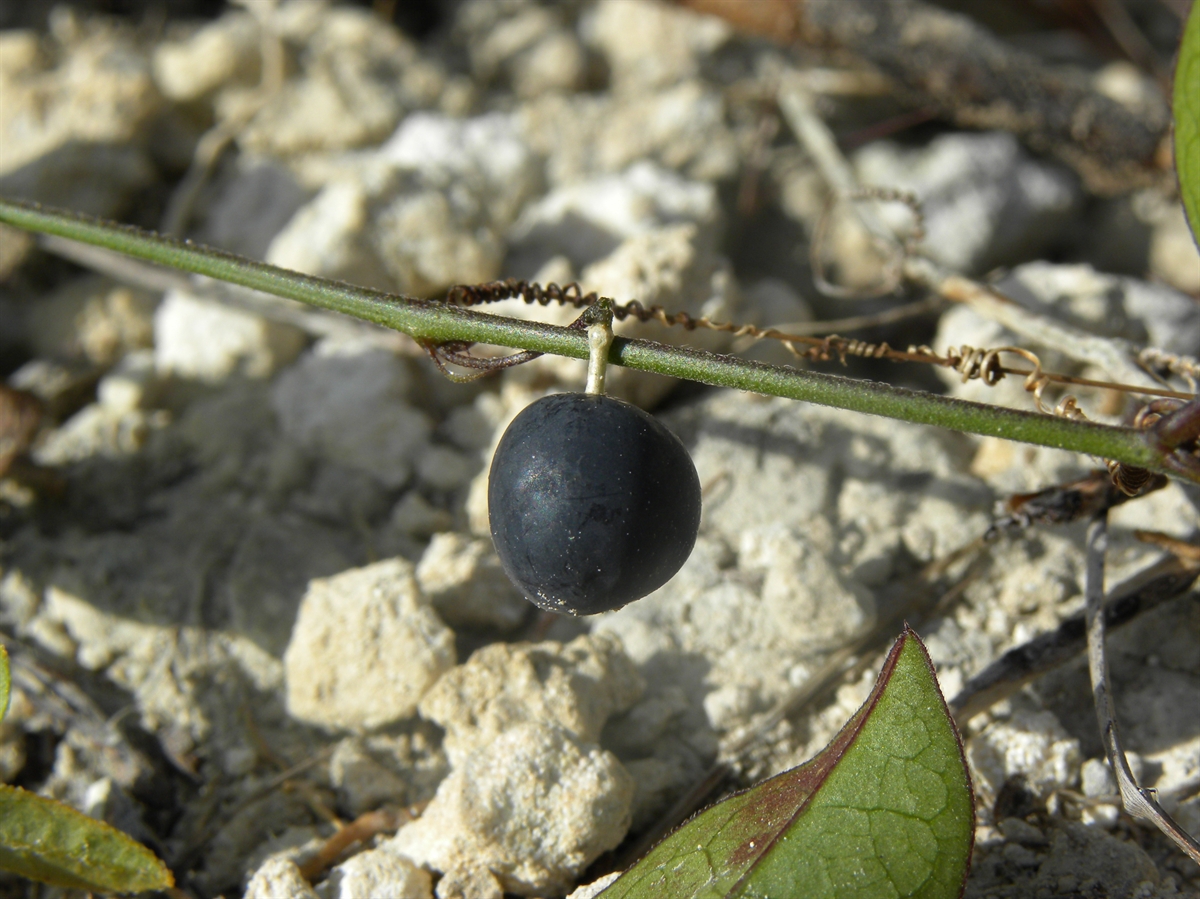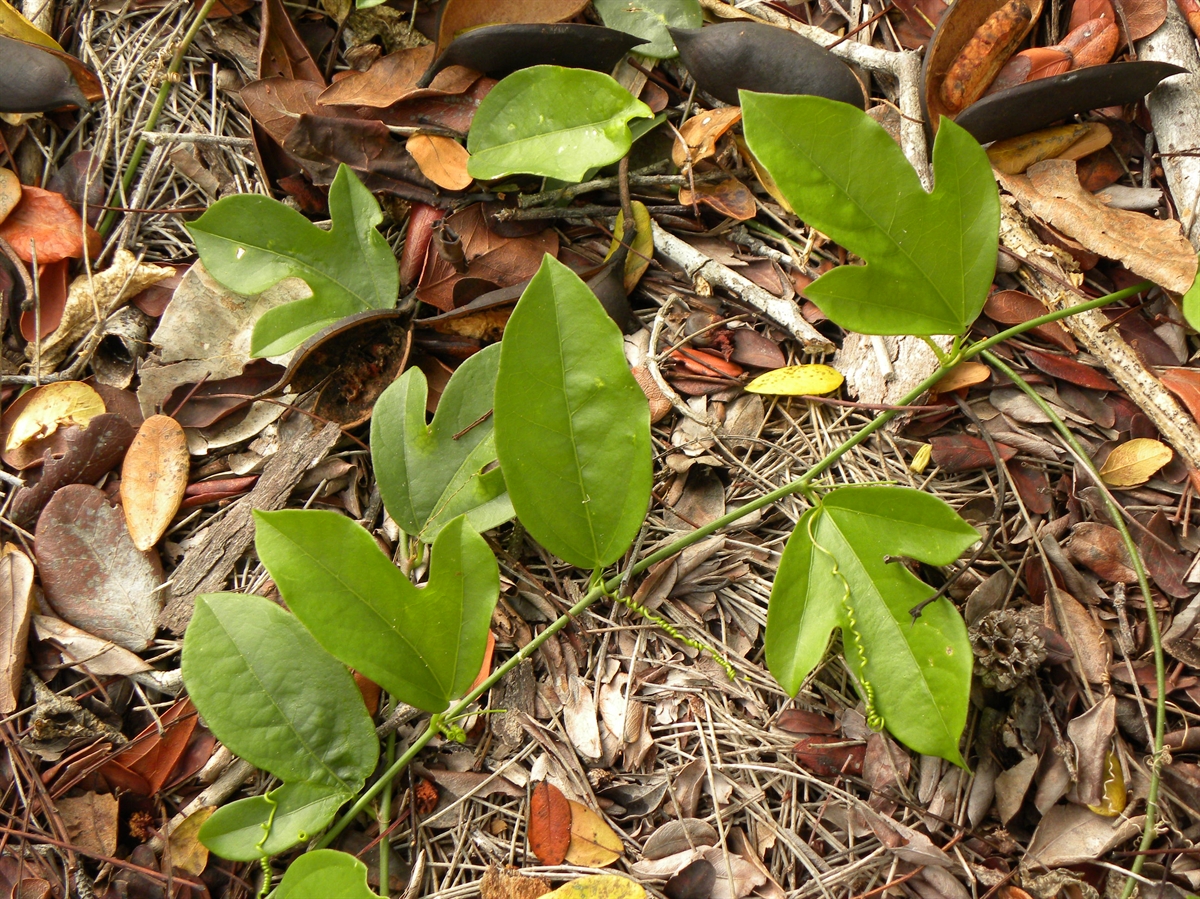Habit: Passiflora suberosa grows as vine with older portions becoming corky with age. The leaves are arranged alternately, to 15 cm in length. The leaves are variable in shape from lanceolate to bi or tri-lobed with an entire margin. The petioles have a pair of glands. Tendrils are present at the nodes.
The complete, perfect, actinomorphic flowers are arranged in pairs or are solitary. There are 3 small deciduous bracts below the flower. The calyx has 5 green unfused sepals. There is no corolla. There is a corona with filaments in 2 series. The outer series is yellowish-white and recurved. The inner series is filamentous and green. There are 5 stamens. The ovary is superior, with 3 stigmatic lobes, a single locule and numerous seeds. The fruit is a berry that turns dark purple at maturity.
Habitat: Passiflora suberosa grows in all plant communities in the Lucayan Archipelago as well as Human Altered environments.
Distribution: Passiflora suberosa occurs on all island groupings within the Lucayan Archipelago as well as the tropical and subtropical New World. It has been introduced into the Old World tropics.
Medicinal/Cultural/Economic usage: Passiflora suberosa is not known to be used medicinally in the Lucayan Archipelago. The fruits are edible although not particularly tasty.




